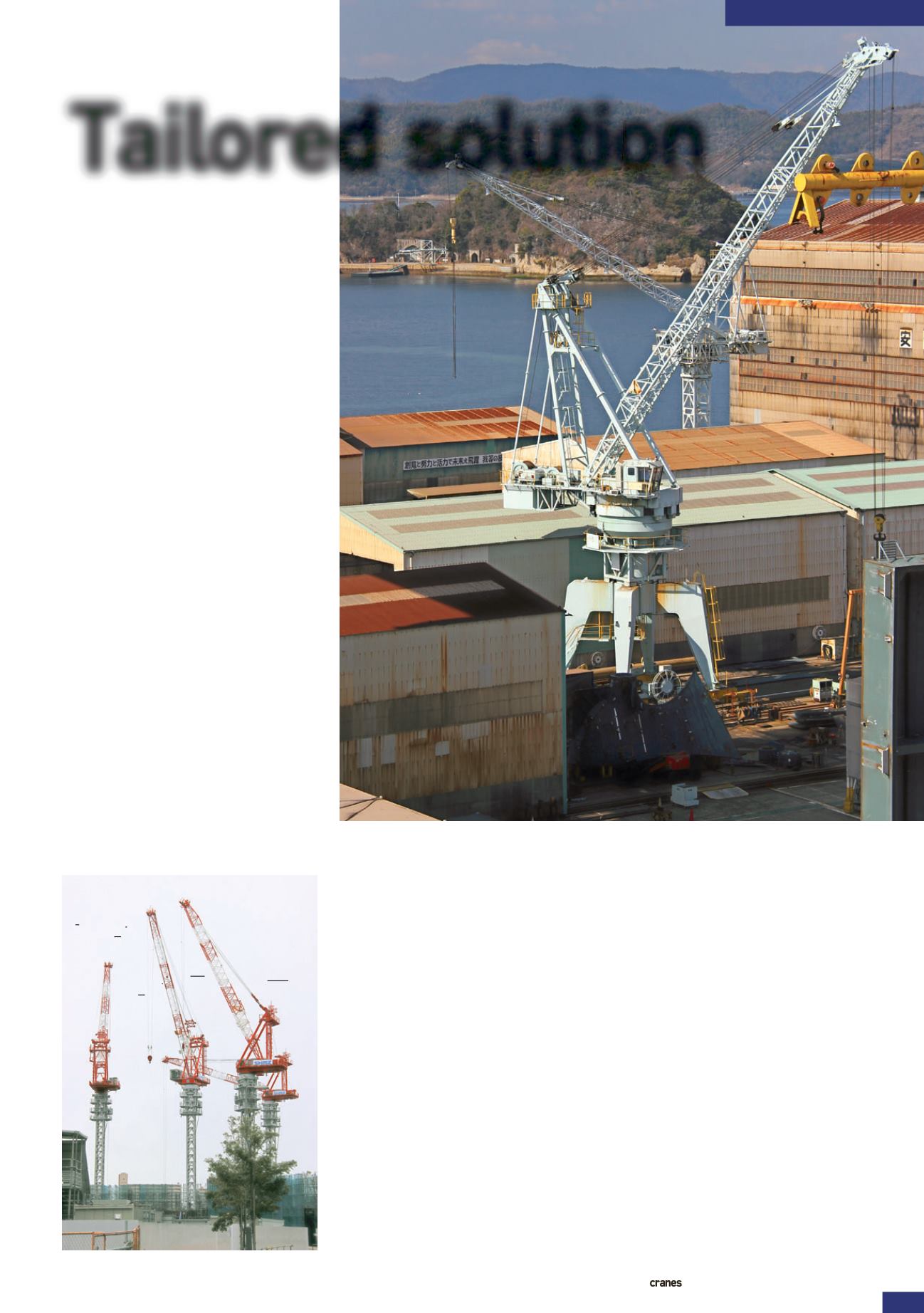
INTERNATIONAL AND SPECIALIZED TRANSPORT
■
SEPTEMBER 2013
21
M
ost people outside Japan in
the crane industry probably
know IHI as a manufacturer of
crawler cranes, port and shipyard lifting
equipment. However tower cranes are also
part of its crane range.
IHI Corporation, formerly known as
Ishikawajima-Harima Heavy Industries, is
one of the larger heavy industries groups
in Japan. Its material handling systems
range from general purpose industrial
cranes like overhead and jib cranes, ship to
shore cranes and construction cranes, to
bulk handling systems for the power and
steel industries.
The development of climbing tower
cranes for high-rise construction can be
traced back to 1966. That was when the
first two Kure KTK-200W floor climbing
restrictions and there is a move to raise
efficiency of construction machines by
using sophisticated control systems.
Combining all the above has led to
development of a specialized breed of rigid
and high technology construction climbing
cranes for the domestic market.
In 1963 building height restriction
permits were opened up in Tokyo, which
meant the development of a high rise
building construction industry in Japan
where KTK (Kure Tower Krane) internal
climbing cranes found a ready market.
When the crane manufacturing division
of Kure Shipbuilding & Engineering was
integrated into IHI in 1968, these floor
climbing construction tower crane were
known as JCC (jib climbing cranes) series
cranes. Capacity was increased over the
years from 200 tonne-metres in 1966 to
70 tonnes capacity and 1,500 tonne-metre
units in 1990.
Outside Japan tower crane
cranes were used to raise the 147 metre
Kasumigaseki Building in Tokyo. A
patented climbing system, of jacking the
machinery platform of the crane alongside
the new crane mast sections being inserted
through the slewing ring, became a
characteristic basic design feature for nearly
all Japanese climbing cranes.
Particulars
Tower crane applications in Japan have
specific requirements. An example is
high wind resistance of up to 55 m/sec
to withstand typhoons. Another is strict
safety requirements concerning earthquake
resistance. A luffing boom design is used
to cope with neighbourhood oversailing
Japan’s IHI uses
experience gained from
a long history to offer
customised jib cranes that
are individually designed
and manufactured to
address the requirements
of each customer. HEINZ-
GERT KESSEL reports
>
Tailored solution
KTK climbing crane veterans of the
first generation are still in use on
shipyards for outfitting duty. Pictured
is a KTK-600W, with 40 tonnes
capacity at 20 m radius on a travelling
portal undercarriage, and one KTK-
180W, which lifts 12 tonnes at 20 m
radius. Both are working in Kure
JCC-V240S climbing cranes with 4.7 tonnes
capacity at 35.5 m radius working in Tokyo on
an apartment building project. The climbing
system can be transferred on site from external
to internal without any component changes
TOWER CRANES


